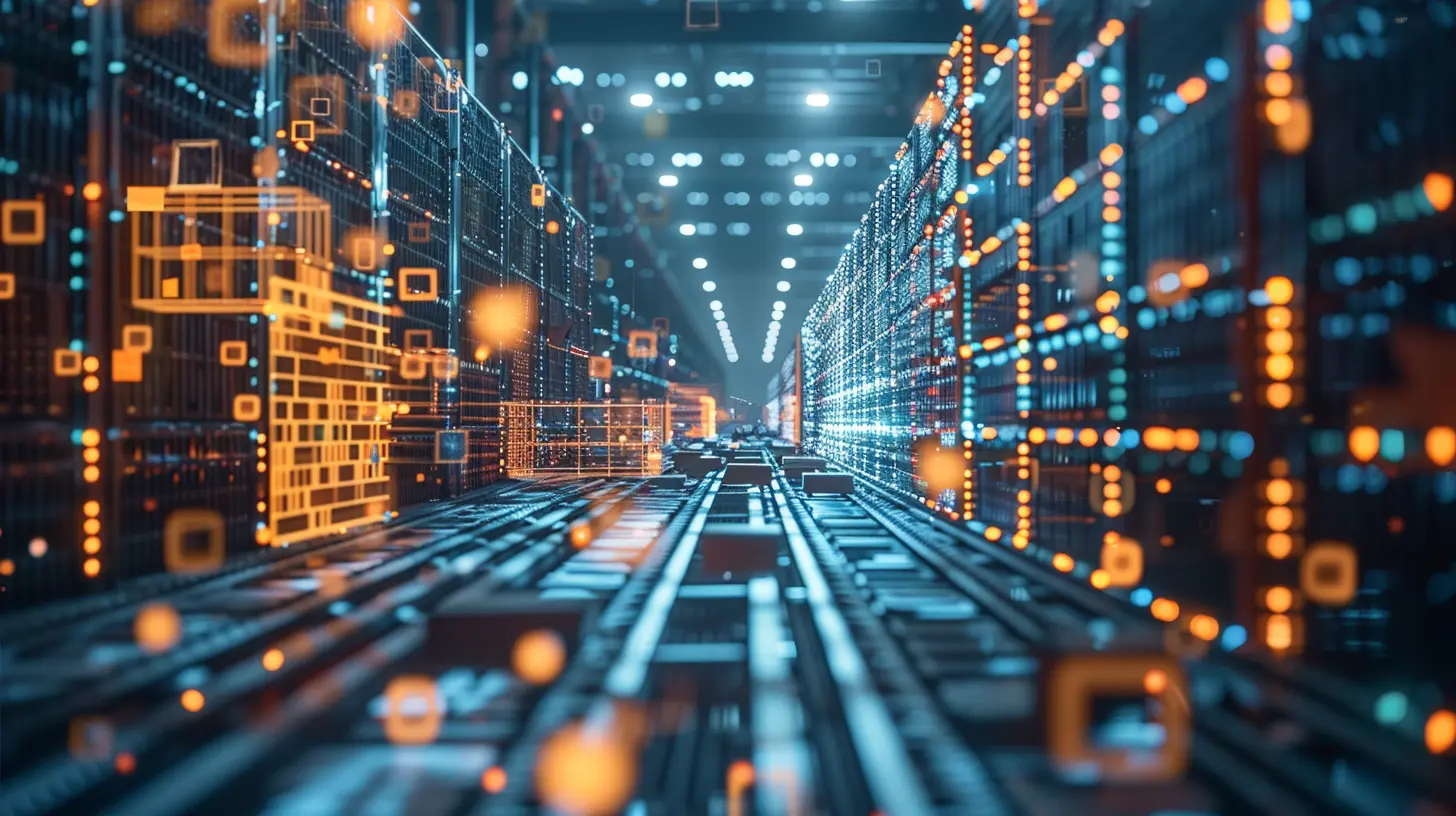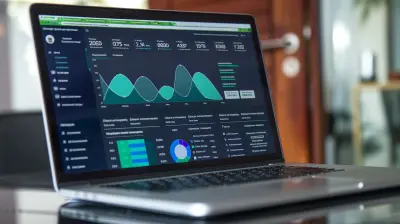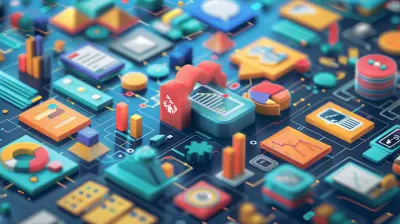How Artificial Intelligence is Revolutionizing the Supply Chain
24 November 2025
Let’s face it—supply chains aren’t exactly the most exciting topic at the dinner table. But here’s the kicker: without them, your favorite gadget, smoothie ingredients, or even that last-minute online gift wouldn't exist in your hands. Now, throw artificial intelligence (AI) into the mix, and suddenly, this sleepy giant wakes up roaring.
So, grab your digital magnifying glass, because what’s happening behind the scenes in supply chains is nothing short of a mystery novel unravelling in real-time—with AI playing detective, strategist, and sometimes even magician.

The AI Buzz: Not Just Hype
AI isn’t just a buzzword anymore. It’s real. It’s practical. And it’s completely shaking up the foundations of how supply chains operate. We're talking about software that can predict, learn, adapt, and make decisions often faster and more accurately than humans ever could.Imagine a virtual brain that monitors millions of moving parts—from production lines in Asia to delivery trucks in the Midwest—all while making snap decisions. Sounds like sci-fi? It’s already happening.

From Chaos to Control: Why Supply Chains Needed AI
Remember the early days of the pandemic when toilet paper became more valuable than gold? That’s a textbook example of a supply chain gone haywire. Traditional supply chains are reactive; they wait until a problem hits before scrambling to fix it.AI flips the script.
It makes supply chains proactive. It anticipates problems, reroutes resources, and keeps everything ticking—like a GPS that not only maps traffic but predicts crashes 30 minutes ahead.
So, what’s AI actually doing inside supply chains? Let’s break it down.
Smart Forecasting: The Crystal Ball You Always Wanted
Forecasting demand used to be a mix of guesswork and gut instinct. Now? It’s all about data, baby.AI takes into account:
- Historical sales figures
- Social media trends
- Weather patterns
- Economic indicators
- Even unexpected variables like viral TikTok videos
All these data points blend into an algorithmic smoothie that can predict what consumers will want, when, and where. Think of it as a weather forecast for product demand—only way more accurate.
The result? Less overstocking, fewer empty shelves, and happier customers. Win-win-win.
Inventory Management: From “Just in Time” to “Right on Time”
Inventory management used to be a tightrope walk. Carry too much, and you bleed cash in storage. Carry too little, and you miss sales.AI systems now keep a hawk’s eye on inventory levels at all times. They automatically adjust restocking schedules, flag potential shortages before they happen, and even recommend alternative items when supplies are low.
It’s like having a super-intelligent stockroom manager who never sleeps and always knows what’s going on.
Predictive Maintenance: Fix Before It Fails
Okay, here’s a fun mental image for you: a factory hums along happily, making thousands of widgets a day. Then, out of nowhere, one tiny machine belt fails. The whole production line? Screeches to a halt.Enter AI.
Using sensors and machine learning, AI monitors machinery vibrations, temperatures, and performance patterns. It detects early signs of wear and tear and schedules maintenance before a breakdown occurs.
It’s kind of like your car blinking at you before the engine light comes on—but way smarter.
Logistics and Route Optimization: The AI GPS You Didn’t Know You Needed
Let’s talk trucks. Or ships. Or drones.No matter the mode of transportation, AI is mapping the fastest, most fuel-efficient, and least risky routes in real-time. We’re talking about analysis of:
- Traffic congestion
- Road conditions
- Weather changes
- Delivery priorities
By shaving even minutes off delivery times and reducing fuel usage, AI isn't just saving money—it's cutting emissions as well. So yeah, it’s kinda green, too.
Dynamic Pricing: The Supply Chain’s Game-Changer
Ever noticed how prices on Amazon seem to jump around like popcorn? That’s AI-driven dynamic pricing in action.These algorithms track demand spikes, competitor pricing, and inventory levels. They throw all that into their virtual cauldron and adjust prices accordingly—sometimes within minutes.
Now imagine what that means for B2B supply chains: better margins, smarter negotiations, and a whole lot fewer surprises.
Supply Chain Transparency: Turning Shadows into Spotlights
One of the biggest mysteries in traditional supply chains is the lack of visibility. Where exactly are your goods? Who touched them? Were they handled properly?AI integrates with blockchain, IoT, and cloud systems to provide full, real-time visibility. Whether it’s tracking a shipment or verifying ethical labor practices, AI opens up every closed door in the supply chain.
Think of it like Google Maps, but for every nut and bolt in your product journey.
Risk Management: The Crystal Shield
Global pandemics. Political unrest. Natural disasters.These are supply chain nightmares that don’t come with warning signs. But AI is starting to change that.
Using predictive analytics, AI models can anticipate disruptions before they happen. They analyze the ripple effect across regions, suppliers, and demand chains to prepare contingency plans. Not only can businesses recover faster—they’re sometimes able to avoid crisis altogether.
Risky business? Not so much anymore.
Human+AI: Not Just Robots Taking Over
Now before you start picturing robots replacing everyone, let’s get one thing clear: AI isn’t here to push humans out. It’s here to make us superhuman.AI takes care of the grunt work—crunching numbers, organizing data, running simulations—so people can focus on strategy, creativity, and decision-making.
It’s like Iron Man’s suit. Without Tony Stark, it’s just flashy metal. But together? Game-changing.
Real-World Players Already Winning With AI
Big names like Amazon, UPS, and IBM are already deep into AI territory. But it’s not just the giants. Mid-sized and even smaller companies are tapping into AI platforms like:- Microsoft Azure AI
- AWS Machine Learning
- Google Cloud AI tools
These tools are becoming accessible, customizable, and surprisingly user-friendly. It’s no longer a question of “if” you should jump in—but “when.” And the answer? Yesterday.
The Dark Side: Are There Risks?
Sure, AI isn’t all sunshine and seamless deliveries.Let’s be real:
- Data privacy remains a big concern
- AI can inherit biases from its training data
- Overreliance on automation might leave companies vulnerable during tech failures
But here’s the thing—it’s all manageable. With the right oversight, ethical implementation, and human-AI collaboration, you can dodge the pitfalls and ride the wave of innovation.
Where Do We Go From Here?
We’re just scratching the surface.AI in the supply chain is expanding into:
- Autonomous vehicles
- Robotic warehouses
- Smart contracts
- Even AI negotiations between suppliers and buyers
The future? It’s not just near. It’s already knocking. And the companies that answer the door are the ones that’ll dominate the decade.
Final Thoughts: You Can’t Afford to Miss This Train
If your business touches a product—any product—at any point from creation to delivery, AI is your new best friend. It’s not just a tool; it's a revolution, reshaping how the world moves goods.So, what’s your next move going to be?
Because while others are stuck navigating the old, winding back roads of supply chain management, the AI revolution is flying down the expressway—and you don’t want to be left behind.
all images in this post were generated using AI tools
Category:
Supply Chain ManagementAuthor:

Caden Robinson
Discussion
rate this article
1 comments
Sienna McMillan
AI is the future; adapt now!
November 24, 2025 at 5:50 AM


